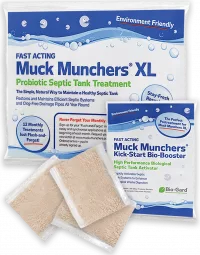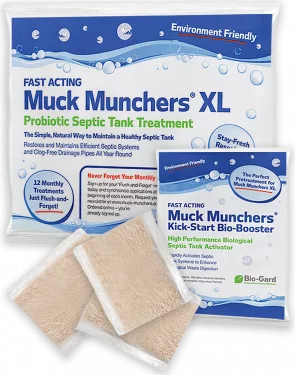How to Maintain Your Septic Tank
Are you wondering how to maintain your septic tank? Septic tank maintenance is straightforward – providing you look after your tank and septic system in the correct manner. It’s sometimes hard to know whether or not you’re doing a good job of your septic tank maintenance, and that stands for those that have lived with a septic tank for years and especially if you’re new to owning one.
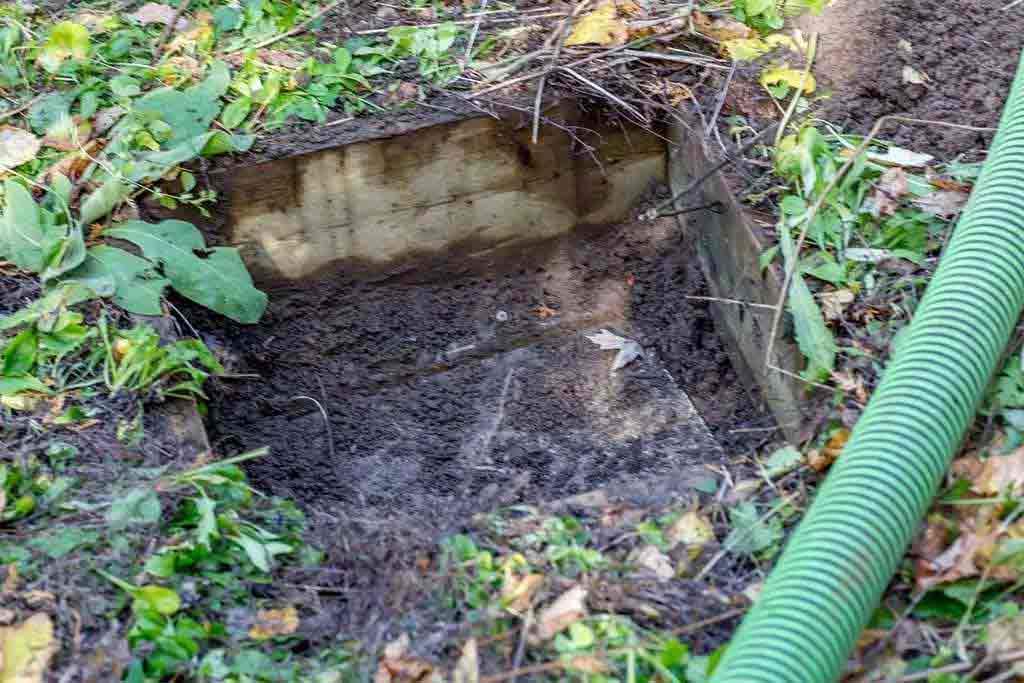
The big questions are:
● What really makes for a good, healthy septic tank?
● How do you know you’re doing a good job?
Firstly, there’s no need to worry. Septic tank maintenance is all about care, and it’s really simple in the long run – providing you know what to keep your eye on. Of course, Muck Munchers are here to help make your life that little bit easier, too.
Are you focusing on septic tank maintenance? Let’s break it down (quite literally)!
How To Maintain Your Septic Tank?
To maintain a healthy septic tank, you need water, plenty of air, bacteria and regular use. That really is all there is when you break it all down. However, it’s worth getting into the nitty-gritty.
Your septic tank is there to handle and digest all that organic waste you simply can’t get rid of otherwise. It does an amazing job of breaking down natural organic waste substances such as fats, oils and grease (FOG) – and yes, let’s not skirt around the issue – it breaks down all your own very personal waste, as well as toilet paper too. If you would like to understand more you can read our article; What is a Septic Tank & How Does It Work
Yes, Septic Tanks Do Need Bacteria!
If you are reading this article, chances are you came across it because you may have a problem with your septic tank maintenance and you are looking to resolve it. You have therefore, more than likely searched for something like “how to maintain your septic tank” and have possibly read about septic tank bacteria during your research.
All healthy septic tanks are healthy because of aerobic bacteria. It’s true! These aerobic bacteria are your friends when it comes to breaking down and getting rid of all that nasty septic waste. Therefore, you’re going to need a healthy environment for the bacteria to thrive in too.
That’s where moisture and water come in. A breathable, liquid, bacteria-filled septic tank is going to work at its absolute best. Luckily, your septic tank is going to be moist by design – so there’s no need for you to worry there.
What’s more, a septic tank that’s in regular use will normally see enough air flow pumped through with flushing wastewater to keep the bacteria aerobic . Discharges will normally bring enough oxygen into your tank for conditions to be healthy. Ultimately, it’s this air quality that’s going to encourage bacteria to stay active. Like us, they need air to thrive and survive.
Believe it or not, the more bacteria and oxygen in your tank, up to a point, the quicker your waste is going to break down into water and carbon dioxide. That means – probably for the first time ever – you’re going to need to seriously stock up on the some of these bacteria, otherwise known as microbes.
Modern domestic package sewage treatment plants, which are tending to replace traditional septic tanks, as well as larger commercial and industrial treatment plants, do things a bit differently. In these settings, you will often see mechanical pumps and air blowers used to increase oxygen levels. It’s a common sight at a sewage treatment plant, should you ever get a weekend free to go and take a look!
Septic Tank Maintenance – Is It Difficult?
Septic tank maintenance isn’t difficult at all. In fact, it’s simple. There’s no need for you to get into your tank and get your arms dirty unless there is a serious problem. You just need to make sure those helpful bacteria are doing their job properly. That’s going to mean that you need to make their environment liveable. It’s also going to mean you need to give them a healthy diet, too!
Bacteria love to eat – so along with air and moisture, you’re pretty much good to go. But did you know that bacteria can also be remarkably fussy? Yes – there really is a diet plan that you can offer your septic tank bacteria, and it’s actually pretty straightforward.
Think about all those chemicals and cleaners you swab around your toilet, around your sinks and on your floors. Regular household cleaning products and bleaches can, and will, weaken or destroy the bacteria in your septic tank.
It’s not reasonable to expect people to live without bleaching the toilet. It’s a bit of a gross situation – meaning compromise is definitely the way forward, and we’re certainly not saying never clean your toilet. It’s a sure-fire way to make sure guests never visit you again, that’s for sure!
However, we are suggesting that in order to achieve optimum bacterial digestion takes place in your tank, you might like to seek some natural (environmentally friendly) substitutes.
Besides household cleaning chemicals, there are other bits and pieces your tank bacteria are going to turn their noses up at. That means no artificial products – no medicines, drugs, paint, thinners – anything that’s unnatural. To be really blunt, anything that didn’t come from your ablutions, that’s the 3 P’s – Pee, Poo and Paper – isn’t going to be much good for the bacteria in your septic tank maintenance. And that also goes for sanitary towels, tampons, wet wipes – not that you should be flushing those in the first place! They all contain indigestible plastics and polymers of one sort or another.
South West Water have produced an amusing short video to remind us of the 3Ps – Pee, Paper and Poo.
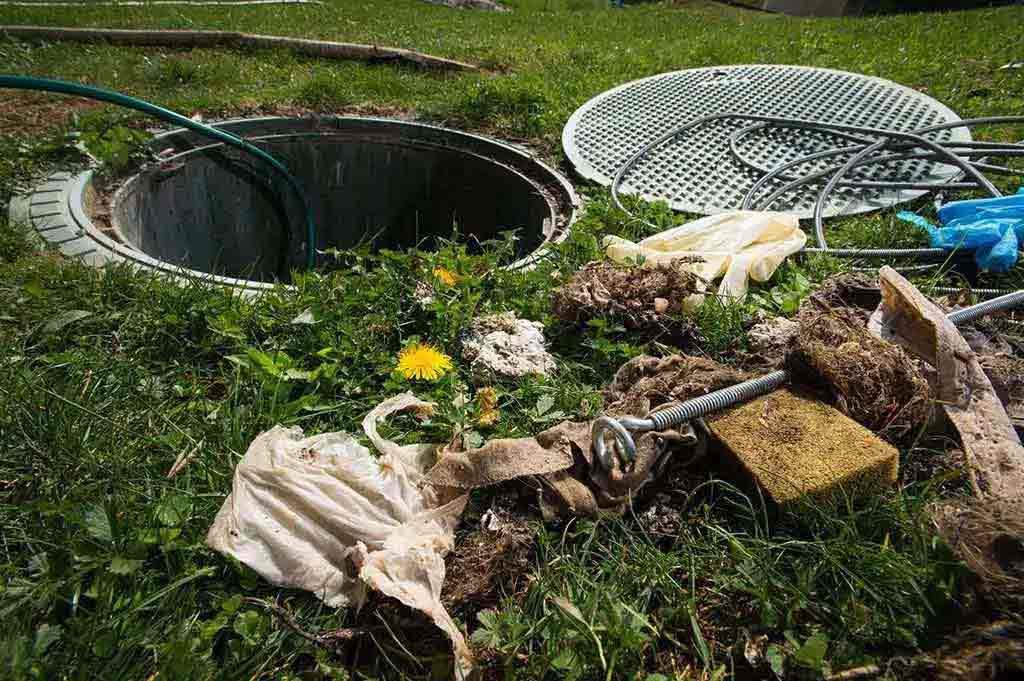
Septic tank maintenance doesn’t have to be hard, but it normally means you have to be conscious of what you’re flushing. If it belongs in the bin, then keep it out of the toilet – pure and simple.
That’s good advice for toilet flushing in general, to be honest – we’re pretty sure plumbers are happy for the work, but the number of blockages they have to deal with is staggering!
How Often Should I Treat My Septic Tank and System?
Occasionally, if you leave your septic tank to do its own thing, you might well end up with organic matter building up and causing a blockage.
The main reason for this is that if there’s not enough bacteria in your tank to break down the inevitable organic waste that, will continue to flood in, together the FOG (remember those Fats, Oils and Grease we mentioned at the beginning). Not perhaps pleasant to think about, but it’s all true.
If you leave your septic tank to build up organic waste, you’re eventually going to need to get it all pumped out. That’s going to mean more money, more hassle, and above all, it can be pretty foul to have to deal with, especially if the drains, the tank or the soakaway is overflowing.
Over time, your septic tank’s bacterial numbers are going to diminish, which means things will pile up, and up, and up some more, until you will find yourself booking pump-outs, in a rinse and repeat cycle for years to come.
To treat your septic tank efficiently, and to help keep it healthy in the long term, the simple solution for septic tank maintenance is to maintain a healthy bacteria balance, adding additional probiotic bacteria on a regular basis.
Muck Munchers Recommendations for Septic Tank Maintenance
Add Good Bacteria to Your Septic Tank
Increasing the right types of bacteria on a regular basis is easy to do and involves a simple once-a-month flushable treatment. Adding Muck Munchers into your tank means that you’re going to cut down on organic waste build-up. It’s also going to mean you can avoid having to pay out for unnecessary pumping solutions, and potential soakaway repairs, while saving a load of money!
Reduce and Eliminate Septic Tank Blockages
Blockages can lead to all kinds of repair needs and faults. When your septic tank stops digesting waste, you’re going to know about it. It’s a nightmare situation, and it will cause a stink (literally). The best action is to prevent this from happening in the first place.
We recommend that you try and add a fresh biological bacterial additive to your tank about once a month, although your tank needs may vary depending on its size. Generally, the bigger the tank and the volume of waste, the more often you are going to need to add more bacteria. Larger properties normally come with larger tanks and tend to be ideal for eight to ten people or more. In fact, if this is the case, you might possibly need to do two bacteria top-ups per month, or double up the dose and a monthly basis.
Use Septic Tank Maintenance Products Proven to Work
This may sound obvious, but a little caution is required, don’t be too hasty with the products you find online. The quickest, easiest thing you probably consider doing is heading straight to Ebay or Amazon. Be careful. Like most things, you get what you pay for.
Biological bacterial material available on online marketplaces can be variable and extremely cheaply made. Therefore, you’re often dicing with buying a batch of bacteria that’s not going to help you an inch. Make sure you read the reviews from genuine verified customers who have used the product.
Look for a bacterial additive that’s 100% proven to work, that guarantees success – and provided by a real company who can back up their product claims to validate who they are, with years of provable experience and positive customer feedback. Muck Munchers are here to help – and you certainly don’t have to break the bank to get access to the best bacteria, from a company with a 6-month money-back guarantee, if their product doesn’t come up to scratch.
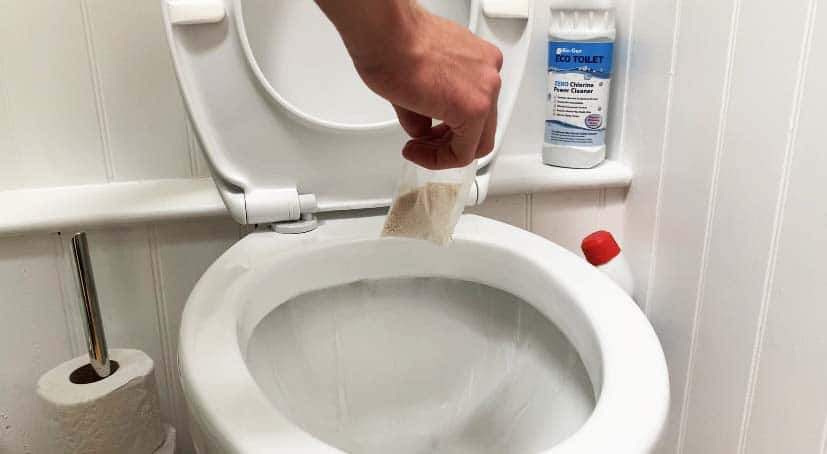
What are the Signs that Your Septic Tank is Full?
Now, this is a total misconception – your septic tank should always be full. What it shouldn’t be full of is organic sludge and matter that’s just not breaking down.
Your septic tank is always full, to an extent. Think of it a bit like two full baths, with the plugs in, with one overflowing into the other. This then means anything draining off will go straight to the soakaway, via the overflow. If your septic tank wasn’t full, it wouldn’t work – that’s the bottom line.
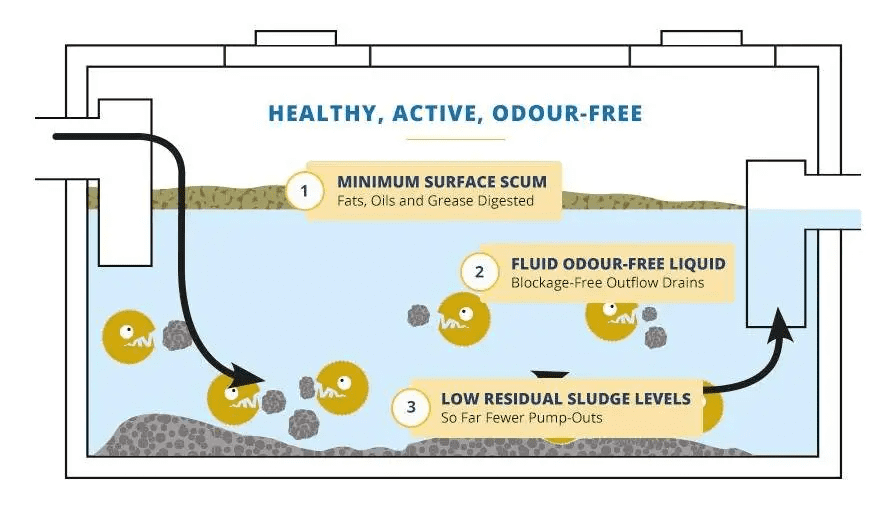
So – when is your tank too full of sludge? That might vary from tank to tank depending on the size and type. However, a worryingly thick amount of sludge at the bottom of your tank is never going to be a good sign.
Generally, a septic tank that’s around one third-filled with sludge is going to need a pump-out. 30% seems to be the benchmark for twin-tank systems.
How Can You Gauge the Sludge Levels in Your Septic Tank?
We know what you’re thinking – how can you tell how high the sludge level actually is in your septic tank? We don’t expect you to jump in yourself with a tape measure!
What you’re going to need to do is get a long enough pole to reach down to the bottom of your tank, and make sure you have a cloth wrapped and tied on tightly around it.
Then, as you dip the pole into the bottom of the tank and take it back out again, (similar to how you would check your car oil), you will be able to tell roughly how much sludge is in the bottom level. This will give you a pretty accurate guide, better than guessing how much sludge you actually have building-up.
If you only have a small amount of sludge on the bottom of your dip-stick pole, then it’s unlikely you’ll need to clear out your tank for a while – possibly for a few years. Think about this for a moment – if it has not been pumped for 2 years and sludge is only 10% up the pole, you probably still have another 4 years before that tank needs emptying again. But do still check regularly – say every 6 months.
Provided you keep your tank topped up with active bacteria, there are no reasons why you can’t expect a low-sludge tank for years to come. If you want to avoid hassle, bad smells and time spent fixing tank faults, you’re going to want to keep the Muck Munchers topped up!
In Conclusion
Ultimately, septic tank maintenance is easier than you might think. There’s no need for you to have to shell out for regular tank pumping, providing you give the tank bacteria the conditions they need to keep your tank low on sludge – the natural way!
Muck Munchers will cut down, not only on organic waste, but also on the money you spend on keeping your septic tank healthy year after year. Keep the bacteria topped up regularly, and you’ll soon find a tank is less hassle to manage than you imagine.
If you’d like to know more about bacterial breakdown and how to maintain your septic tank the affordable and healthy way, we have further information across our site on our recommended products, to explain more about good and bad septic tanks, and of course, you can reach out to our team to ask for advice.
Septic tank maintenance might not be the most enviable job on the planet, but it’s worth doing – worth every penny! Grab some Muck Munchers and give your organic septic wastewater the breakdown treatment. And please, don’t just go flushing anything you shouldn’t!
